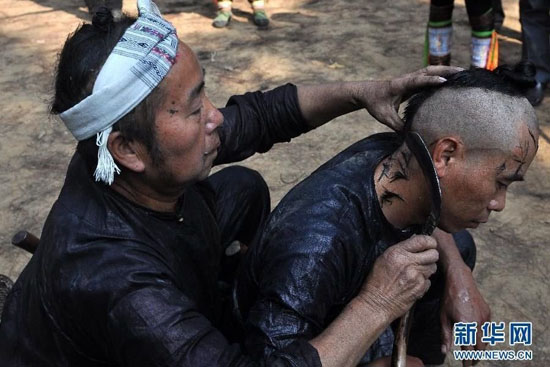 |
|
Miao people get their hair cut with a sickle.
|
Change and Transition
Although the Basha people honor their tribal traditions, this has not prevented their assimilation into modern society. They still live in stilted houses, carry firelocks and wear dark clothes, but many of their folk customs are changing. Tourism has also had influence on this ancient village. Halfway up the hill where the village is situated is a flat clearing that serves as a performance stage for the benefit of visitors and travelers. Both adults and children perform choreographed acts, such as displaying guns in different formations and playing reed pipes, in traditional attire. Although intended as entertainment, these shows give tourists an insight into local culture and folk customs.
Basha differs from other tourist attractions in many ways, most notably in its indifference to selling locally made products to visitors. Embroidered items and those made from bamboo shoots are popular, but we seldom saw villagers touting them to tourists. Only a few shops near the square sell souvenirs. It appears that the Basha people are disinclined to hawk local specialties.
Before leaving we had lunch at a hostel that gave us a clear view through the window of the entire village and its dwellers going about their business. I could almost sense their awareness that life would never be the same as it was before Basha became a tourist attraction. The original lifestyle has been replaced by a more hectic way of living. Caught in the clash between modern and ancient cultures, locals seem a little dazed. They have lost their past, and what tourism will bring to this village remains to be seen.
We recommend:
